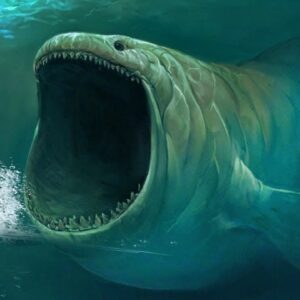In the vast and diverse tapestry of life on Earth, some animals are so rare that they capture the imagination and highlight the fragility of our planet’s ecosystems. From remote islands to hidden forests, these elusive creatures are rare not just in number but in their very nature. Here’s a look at some of the rarest animals in the world, each with a unique story that underscores the importance of conservation efforts.
1. Vaquita
The vaquita is the world’s most endangered marine mammal, with fewer than 10 individuals believed to be left in the wild. Native to the northern part of the Gulf of California, Mexico, this small porpoise faces extinction primarily due to bycatch in illegal gillnets used for fishing another endangered species, the totoaba fish.
2. Amur Leopard
The Amur leopard, native to the temperate forests of the Russian Far East and northeastern China, is one of the rarest big cats on the planet. With fewer than 100 individuals left in the wild, habitat loss and poaching are significant threats to its survival.
3. Javan Rhino
With fewer than 75 individuals remaining, the Javan rhino is one of the most critically endangered large mammals. This elusive species is confined to Ujung Kulon National Park in Indonesia, where it is threatened by habitat destruction and natural disasters.
4. Saola
Often referred to as the “Asian unicorn,” the saola is one of the rarest large mammals in the world. Discovered in 1992 in the Annamite Range of Vietnam and Laos, this elusive bovine is critically endangered due to habitat loss and poaching.
5. Kakapo
The kakapo, also known as the owl parrot, is a critically endangered flightless bird from New Zealand. With fewer than 250 individuals remaining, its population is carefully monitored and managed through intensive conservation efforts to prevent extinction.
6. Yangtze Giant Softshell Turtle
One of the rarest turtles in the world, the Yangtze giant softshell turtle is critically endangered with only a handful of individuals known to exist. Native to China, this species is threatened by habitat destruction and the illegal pet trade.
7. Northern Bald Ibis
Once widespread across Europe, the Northern bald ibis is now one of the rarest birds in the world. It was believed to be extinct in the wild until a small population was discovered in Morocco. Conservation efforts are ongoing to protect and increase their numbers.
8. Hawksbill Turtle
The Hawksbill turtle, renowned for its beautiful shell, is critically endangered due to illegal trade, habitat loss, and climate change. Conservation efforts focus on protecting nesting sites and reducing bycatch to help this species recover.
9. Spoon-billed Sandpiper
With fewer than 500 individuals left, the Spoon-billed sandpiper is one of the most endangered shorebirds in the world. This small wader breeds in the Russian Far East and migrates through Asia, where habitat loss and human disturbance pose significant threats.
10. California Condor
Once on the brink of extinction, the California condor has made a remarkable comeback thanks to intensive conservation efforts. With a current population of around 500 individuals, this North American vulture is still considered one of the rarest birds in the world.
11. Vaquita
The vaquita is the world’s most endangered marine mammal, with fewer than 10 individuals believed to be left in the wild. Native to the northern part of the Gulf of California, Mexico, this small porpoise faces extinction primarily due to bycatch in illegal gillnets used for fishing another endangered species, the totoaba fish.
12. Kakapo
The kakapo, also known as the owl parrot, is a critically endangered flightless bird from New Zealand. With fewer than 250 individuals remaining, its population is carefully monitored and managed through intensive conservation efforts to prevent extinction.
13. Yangtze River Dolphin
Known as the baiji, the Yangtze River dolphin is critically endangered with only a few individuals confirmed. Native to the Yangtze River in China, habitat loss, pollution, and boat traffic have drastically reduced its numbers.
14. Sunda Pangolin
The Sunda pangolin, found in Southeast Asia, is critically endangered due to illegal wildlife trade and habitat loss. Its unique scales are highly sought after, and conservation efforts are focused on reducing poaching and protecting its natural habitat.
15. Borneo Pygmy Elephant
The Borneo pygmy elephant is one of the smallest and rarest elephant species, found only on the island of Borneo. Habitat loss and human-wildlife conflict threaten its population, making conservation efforts crucial for its survival.
16. Indian Star Tortoise
The Indian star tortoise is critically endangered due to illegal pet trade and habitat destruction. Native to India and Sri Lanka, this species is known for its distinctive star-patterned shell.
17. Greater Bamboo Lemur
Native to Madagascar, the greater bamboo lemur is critically endangered due to habitat loss and hunting. Conservationists are working to protect its remaining forest habitat and increase its population through breeding programs.
18. Roti Island Snake-necked Turtle
The Roti Island snake-necked turtle is found only on the Indonesian island of Roti. With a critically low population, it faces threats from habitat loss and the illegal pet trade. Conservation efforts are focused on protecting its habitat and reducing human impact.
19. Philippine Eagle
The Philippine eagle, one of the largest and most powerful eagles in the world, is critically endangered due to deforestation and habitat destruction. With only a few hundred individuals left, conservation programs aim to protect its forest habitat and prevent further decline.
20. Forest Turtle
The forest turtle, or Vietnamese pond turtle, is critically endangered due to habitat loss and illegal pet trade. Native to Vietnam and Laos, efforts are underway to protect its natural habitat and combat illegal trafficking.
Conclusion
The rarity of these animals underscores the need for urgent and effective conservation measures. By protecting their habitats and addressing the threats they face, we can work towards ensuring that these unique species continue to thrive. Each rare animal is a reminder of the intricate balance of our ecosystems and the importance of preserving the biodiversity that makes our planet so remarkable.





